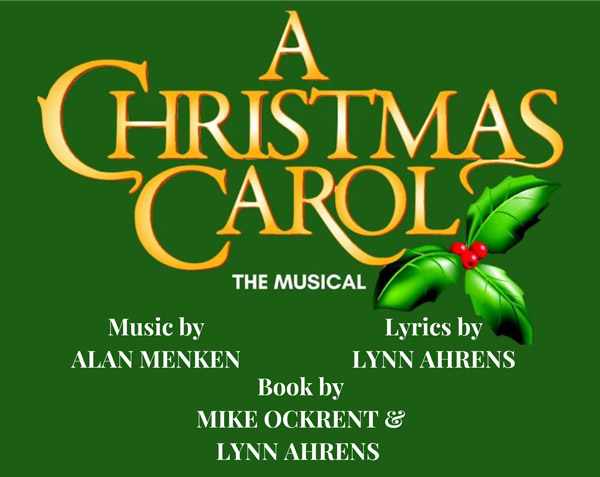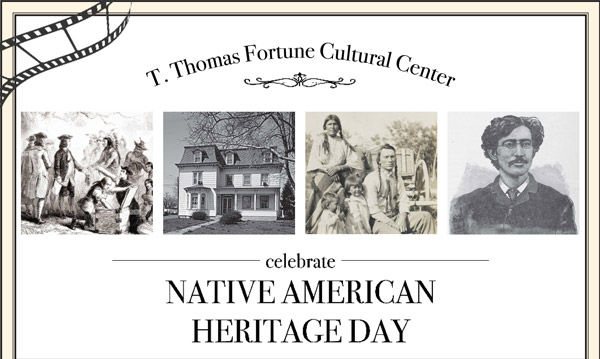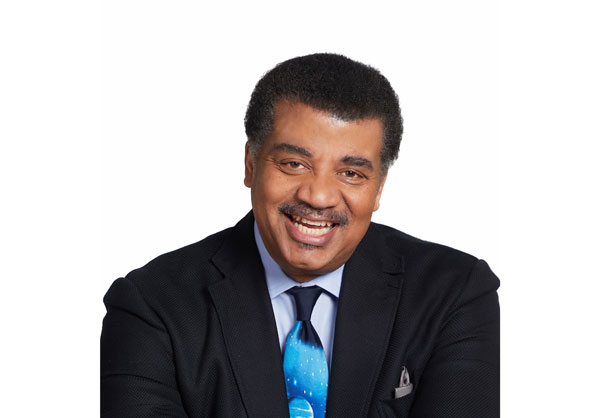By Christopher Benincasa, JerseyArts.com
originally published: 07/04/2020
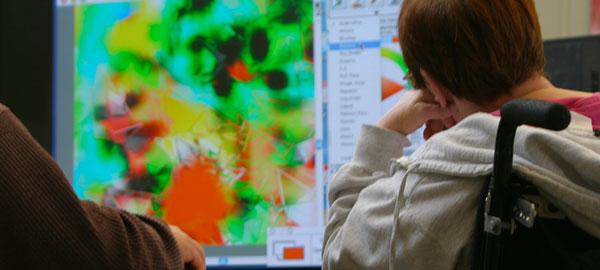
Like most COVID-era arts events, the 10th annual Rutgers New Jersey Medical School Collaborative ARTS exhibition is going virtual. A summer standard, Rutgers NJMS has always provided the venue for the Jewish Service for the Developmentally Disabled’s WAE (Wellness, Arts, Enrichment) Center and the Matheny Arts Access Program to fill with the work of artists with disabilities. The COVID-19 pandemic may have prevented this special show from happening in its usual space, but, for two organizations devoted to transcending limitations, re-creating the exhibition online was a welcome challenge.
We spoke about the exhibition with Heather Williams, Arianne Peterson, and Monica Schneider-Brewer. Williams and Peterson both work for the Arts Access Program at Matheny, a hospital and school for children and adults with medically complex developmental disabilities, located in Peapack, New Jersey. Schneider-Brewer is Special Projects Coordinator at the JSDD’s WAE Center in West Orange, NJ. Both organizations have collaborated on this annual exhibition program since it began.
The online exhibition will go live here on July 13, 2020.
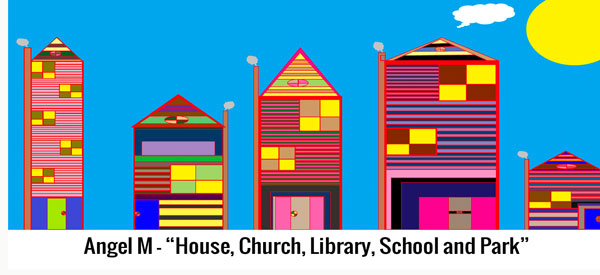
Jersey Arts: How is making art empowering for people with disabilities?
Heather Williams: One of the missions of Matheny’s Arts Access Program is to give our clients an outlet to creatively express themselves in either the visual, performing, or literary arts. It gives them a sense of self – being able to get what's in their brain out onto the canvas, the stage, or the page.
Arianne Peterson: This program offers them an identity other than their disability. And it gives them an opportunity to be seen by other people as a professional, as an artist.
Monica Schneider-Brewer: And I would just add that making art has the same impact on people with disabilities as it has on people without disabilities. It informs their life, it informs their relationships with others, and it informs their relationship with themselves.
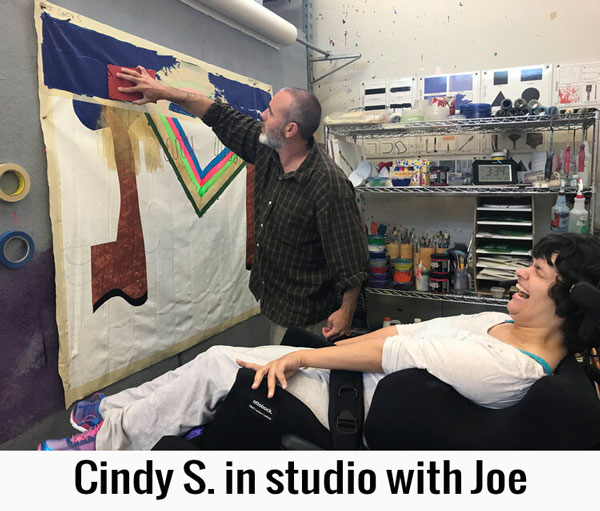
JA: How were these programs developed?
HW: It's been a constant progression over 26 years to figure out the best practices to make sure that the art that's created in our program is uniquely theirs, and that we are just the tools to make that art happen. So, everything that's coming out of our program has no influence from the staff at Matheny. And we've developed protocols, charting systems, and communication systems that allow that to happen.
AP: And, because of these methods, you can’t see the evidence of the facilitation process when you look at the artists' bodies of work. Likewise, artists working with the same facilitator are creating vastly different work – without a trace of interference. So, you can see just by looking at the artwork that's produced that the system is working.
MS-B: Yes, the facilitator is completely neutral in the process – just really enabling the artist's expression. They don't have a voice in it, which is why it reflects the artists singularly. They have very big voices about what they're doing.
JA: Could you put us in the room where this work is being made and walk us through the art-making process?
HW: You know, it's kind of putting it in very simple terms, but it's sort of like an advanced game of 20 questions. The facilitator has to ask so many things, and get so many details, to make sure that whatever paint stroke is applied to the canvas is exactly what the artist intended. I happen to be a dance facilitator. It can be a tedious process, but it’s also a beautiful process in the sense that it's this working relationship – one artist assisting another artist. We, as facilitators, have to throw our egos out the door.
AP: One of the most important parts of the facilitation process is the trust that's developed between the artist and the facilitator. The artist needs to have trust in the facilitator’s neutrality. And that can only happen if the facilitator can accurately verify that he or she gets everything right, understands what the artist wants before putting a brush to the canvas, or before typing a word on the page – whatever medium they're working with.
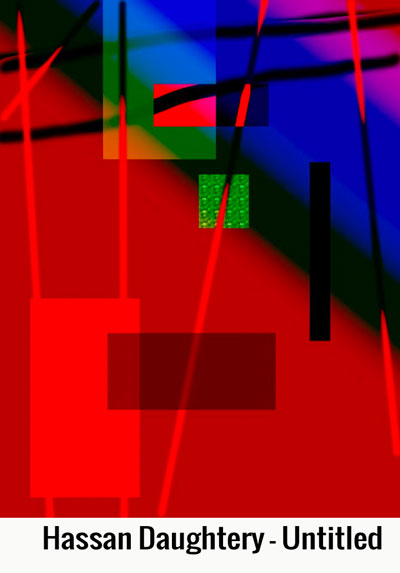
JA: What will the online exhibition experience be like?
AP: It’s a virtual gallery space that we’ve uploaded the artwork to. We hang it on virtual walls, and viewers can explore the space on their own. They can zoom in and out on the artwork, and there's a scroll bar at the bottom that has all the information about the artwork. And there are links to click on if they have questions about the artists, or about the work that's on display.
HW: It's been a learning curve. We’ve never had to shift to virtual programming before. But we couldn’t let the pandemic stop us. We wanted to make sure that we celebrated the 10th year of this collaboration because it's such a milestone for all of us. And we've just done everything we can to make sure it happens – but we’re really learning along the way.
MS-B: Flying by the seat of our pants. But one of the potential benefits is that 100 times more people can see the exhibit from the comfort of their homes, or on their mobile devices.
HW: And the artists have told us that they are really grateful for the opportunity – and that they’re just excited to be showing something that is so personal to them, despite what’s happening in the world right now. And we're all just so proud that we didn't let COVID stop us, and that this amazing work is still going to be shown.
MS-B: Not closing doors. It's what we’re all about, right? Not leaving doors closed, finding another way around.
AP: Right. Our programs are about not letting limitations stop us – not letting limitations stop our artists. That’s who we are. That’s already our mindset. And so why would we let COVID stop this wonderful event? We knew that there was a way to still have it. And we worked together to find it.
MS-B: The relationships between the facilitators and the artists, and the relationships amongst the artists themselves, really grow over time, and so many good things come from that. Without those relationships, nothing else is possible.
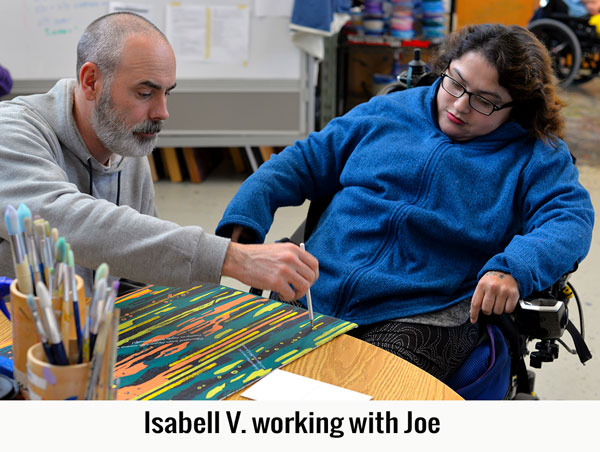
About the author: Christopher Benincasa is an Emmy Award-winning arts and culture journalist. He produced content for NJ PBS for a decade before co-founding PCK Media. Christopher currently works as a freelance producer, video editor, writer, and communications specialist for a diverse set of commercial, non-profit, and government clients. His work has been featured on various PBS stations, and in American Abstract Artists Journal, The Structurist, Paterson Literary Review, and JerseyArts.com.
Content provided by
Discover Jersey Arts, a project of the ArtPride New Jersey Foundation and New Jersey State Council on the Arts.
FEATURED EVENTS
Narrow results by date, categories, or region of New Jersey.
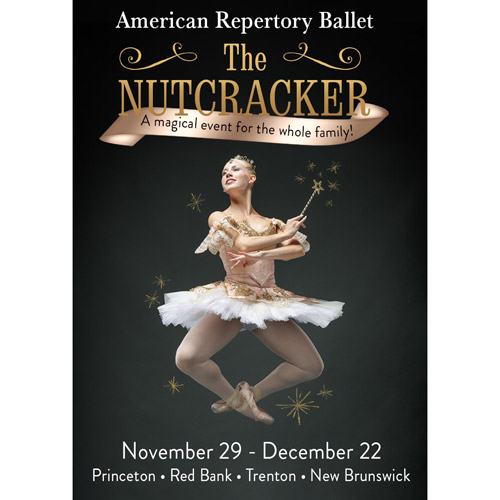
American Repertory Ballet's THE NUTCRACKER
Friday, November 29, 2024 @ 7:00pm
McCarter Theatre Center
91 University Place, Princeton, NJ 08540
category: dance
View event page for full information

American Repertory Ballet's THE NUTCRACKER
Friday, November 29, 2024 @ 2:00pm
McCarter Theatre Center
91 University Place, Princeton, NJ 08540
category: dance
View event page for full information
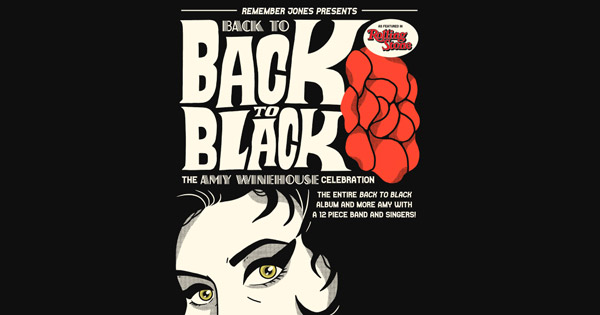
Remember Jones Presents back to BACK TO BLACK: the Amy Winehouse Celebration
Friday, November 29, 2024 @ 7:30pm
The Vogel
99 Monmouth Street, Red Bank, NJ 07701
category: music
View event page for full information
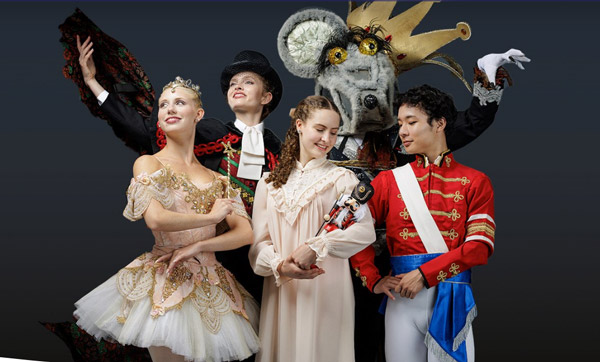
American Repertory Ballet Presents "The Nutcracker"
Friday, November 29, 2024 @ 7:00pm
McCarter Theatre Center (Matthews Theatre)
91 University Place, Princeton, NJ 08540
category: dance
View event page for full information

American Repertory Ballet Presents "The Nutcracker"
Friday, November 29, 2024 @ 2:00pm
McCarter Theatre Center (Matthews Theatre)
91 University Place, Princeton, NJ 08540
category: dance
View event page for full information
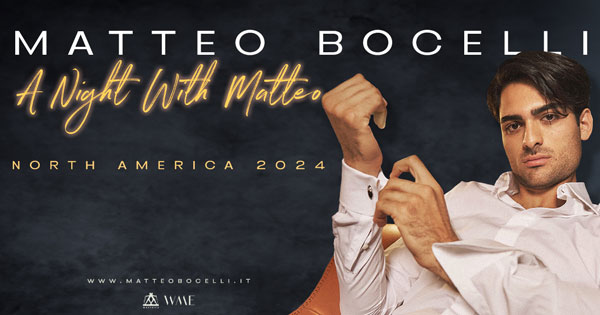
Matteo Bocelli – A Night with Matteo
Friday, November 29, 2024 @ 8:00pm
Count Basie Center for the Arts
99 Monmouth Street, Red Bank, NJ 07701
category: music
View event page for full information
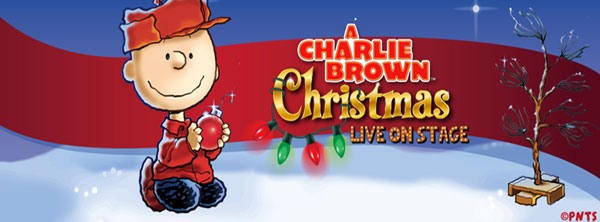
A Charlie Brown Christmas: Live on Stage
Friday, November 29, 2024 @ 5:00pm
Mayo Performing Arts Center (MPAC)
100 South Street, Morristown, NJ 07960
category: kids
View event page for full information

A Charlie Brown Christmas: Live on Stage
Friday, November 29, 2024 @ 2:00pm
Mayo Performing Arts Center (MPAC)
100 South Street, Morristown, NJ 07960
category: kids
View event page for full information

Anthony Rodia
Friday, November 29, 2024 @ 8:00pm
Bergen Performing Arts Center (bergenPAC)
30 North Van Brunt Street, Englewood, NJ 07631
category: comedy
View event page for full information
More events
Event Listings are available for $10 and included with our banner ad packages
EVENT PREVIEWS

Mile Square Theatre presents the World Premiere of "The Christmas Show Must Go On"
(HOBOKEN, NJ) -- Mile Square Theatre presents the World Premiere of The Christmas Show Must Go On by Pia Wilson from November 29 through December 15, 2024. This is a new classic tale for Christmas! The fairies in the Christmas Realm have been losing their power and the Christmas ghosts may all be leaving the realm to become Halloween ghosts. Can the Christmas Fairy welcome humans to the show for the first time ever, stop the ghosts from defecting, and make the annual Christmas Show happen?
UPCOMING EVENTS
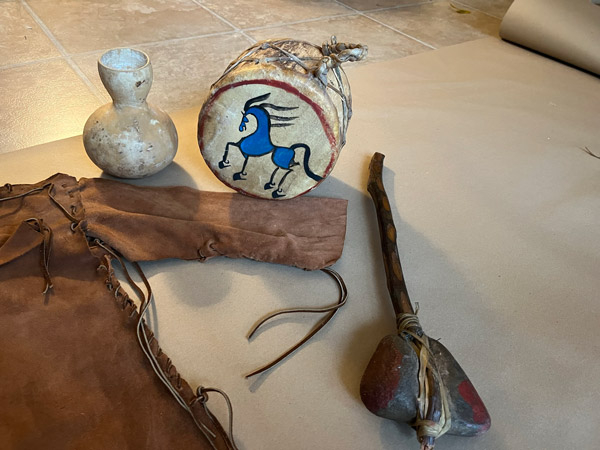
South Jersey's Indigenous Communities Celebrated in New A.C. Arts Garage Exhibit
(ATLANTIC CITY, NJ) -- A new exhibit at the Noyes Arts Garage of Stockton University will celebrate two southern New Jersey tribal communities through the display of historical documents, traditional artifacts and contemporary art. "Still Here: The Nanticoke Lenni-Lenape and Powhatan-Renape Nations of Southern New Jersey" opens October 9 and runs until January 5, 2025.














